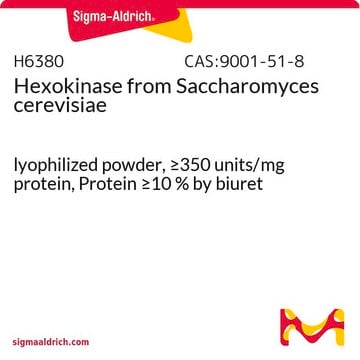Product H7779, Retinoic acid p-hydroxyanilide, can be dissolved in DMSO (25 mg/ml) and ethanol (25 mg/ml).
Kluczowe dokumenty
H7779
Retinoic acid p-hydroxyanilide
≥95%
Synonim(y):
4-HPR, Fenretinide, N-(4-Hydroxyphenyl)retinamide
Wybierz wielkość
847,00 zł
Wybierz wielkość
About This Item
847,00 zł
Polecane produkty
pochodzenie biologiczne
synthetic (organic)
Próba
≥95%
Formularz
powder
kolor
yellow to yellow-orange
temp. przechowywania
−20°C
ciąg SMILES
CC1=C(\C=C\C(C)=C\C=C\C(C)=C\C(=O)Nc2ccc(O)cc2)C(C)(C)CCC1
InChI
1S/C26H33NO2/c1-19(11-16-24-21(3)10-7-17-26(24,4)5)8-6-9-20(2)18-25(29)27-22-12-14-23(28)15-13-22/h6,8-9,11-16,18,28H,7,10,17H2,1-5H3,(H,27,29)/b9-6+,16-11+,19-8+,20-18+
Klucz InChI
AKJHMTWEGVYYSE-FXILSDISSA-N
Powiązane kategorie
Opis ogólny
Zastosowanie
Działania biochem./fizjol.
Hasło ostrzegawcze
Danger
Zwroty wskazujące rodzaj zagrożenia
Zwroty wskazujące środki ostrożności
Klasyfikacja zagrożeń
Acute Tox. 4 Dermal - Acute Tox. 4 Inhalation - Acute Tox. 4 Oral - Eye Irrit. 2 - Repr. 1B - Skin Irrit. 2 - STOT SE 3
Organy docelowe
Respiratory system
Kod klasy składowania
6.1C - Combustible acute toxic Cat.3 / toxic compounds or compounds which causing chronic effects
Klasa zagrożenia wodnego (WGK)
WGK 3
Temperatura zapłonu (°F)
Not applicable
Temperatura zapłonu (°C)
Not applicable
Środki ochrony indywidualnej
Eyeshields, Gloves, type P3 (EN 143) respirator cartridges
Wybierz jedną z najnowszych wersji:
Certyfikaty analizy (CoA)
Nie widzisz odpowiedniej wersji?
Jeśli potrzebujesz konkretnej wersji, możesz wyszukać konkretny certyfikat według numeru partii lub serii.
Masz już ten produkt?
Dokumenty związane z niedawno zakupionymi produktami zostały zamieszczone w Bibliotece dokumentów.
Klienci oglądali również te produkty
-
In what solvents can product H7779, Retinoic acid p-hydroxyanilide, be dissolved?
1 answer-
Helpful?
-
-
What is the Department of Transportation shipping information for this product?
1 answer-
Transportation information can be found in Section 14 of the product's (M)SDS.To access the shipping information for this material, use the link on the product detail page for the product.
Helpful?
-
-
How can one store a solution of product H7779, Retinoic acid p-hydroxyanilide?
1 answer-
A solution of product H7779, Retinoic acid p-hydroxyanilide, can be aliquoted and stored at -20°C for up to 3 months. Solutions should be protect from light.
Helpful?
-
Active Filters
Nasz zespół naukowców ma doświadczenie we wszystkich obszarach badań, w tym w naukach przyrodniczych, materiałoznawstwie, syntezie chemicznej, chromatografii, analityce i wielu innych dziedzinach.
Skontaktuj się z zespołem ds. pomocy technicznej












